Binghatti

BINGHATTI
Binghatti, a prominent real estate developer in the UAE, approached us to help strengthen their organic visibility and website performance. Known for their innovative architecture and luxury developments, their online presence did not reflect the brand’s quality. The website was slow, suffered from poor mobile performance, broken links, and lacked technical SEO fundamentals—hindering both crawlability and user experience.
Our goal was to perform a full-scale technical SEO audit, address the issues, and build a foundation that supports better rankings, faster performance, and scalable organic growth.
Audit Type
Technical
Market
Gulf region
Start Date
February 22, 2025
Industry
Real estate



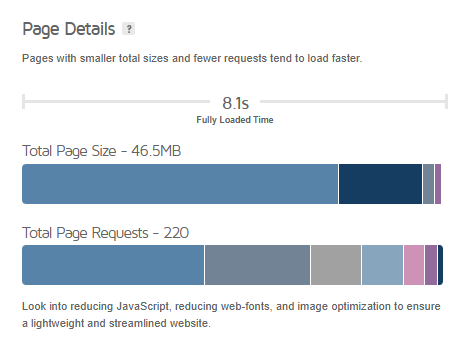
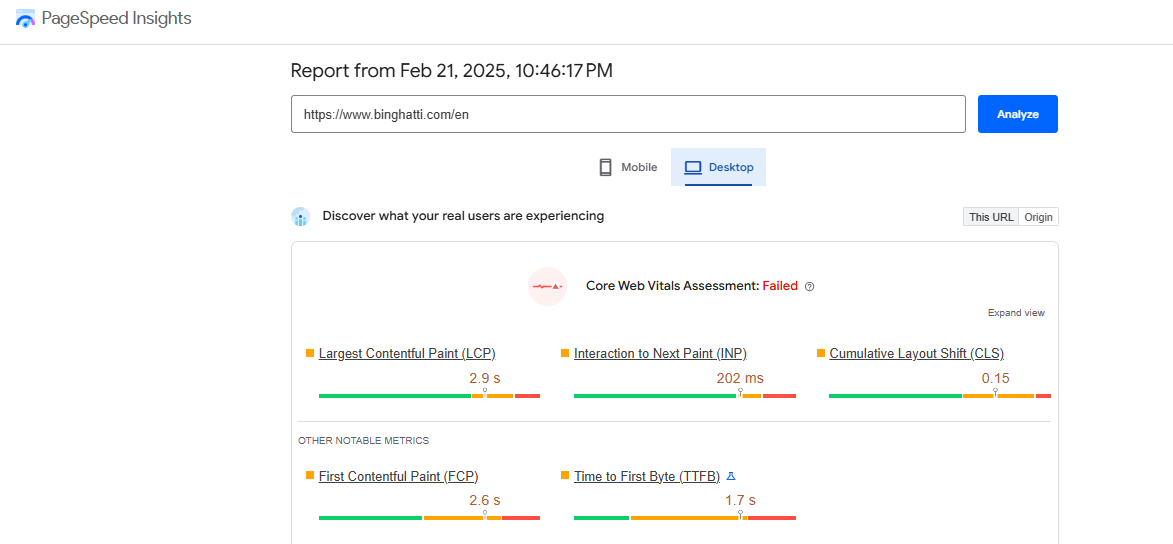
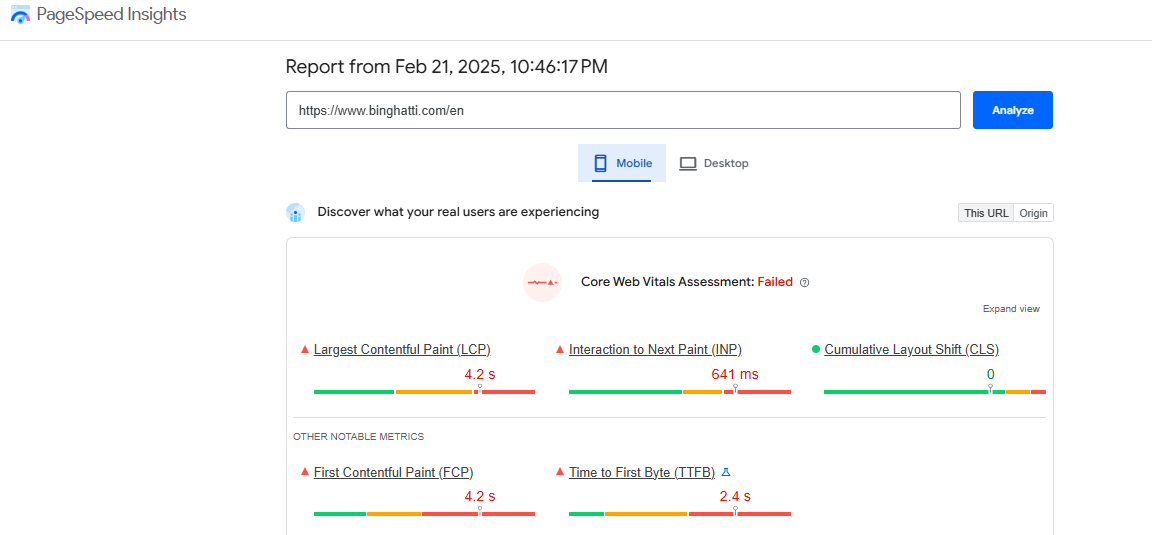

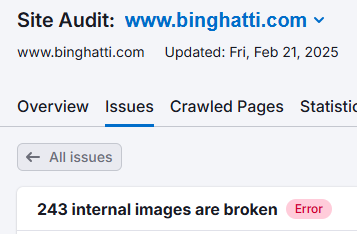

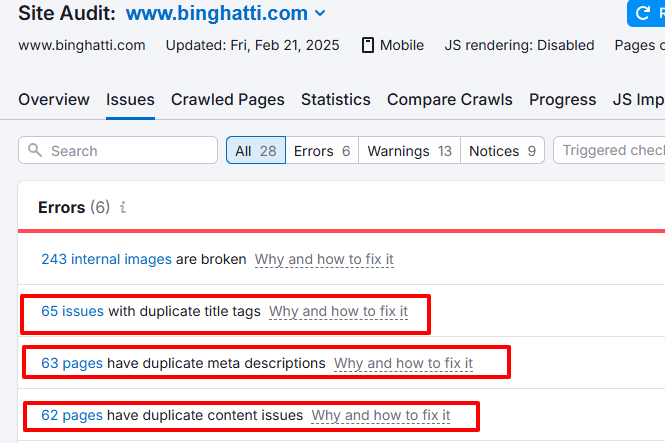
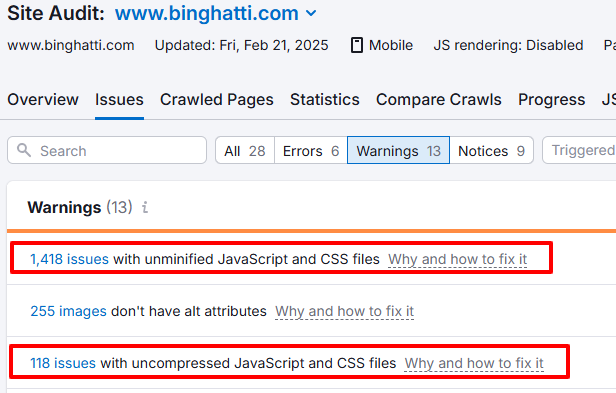

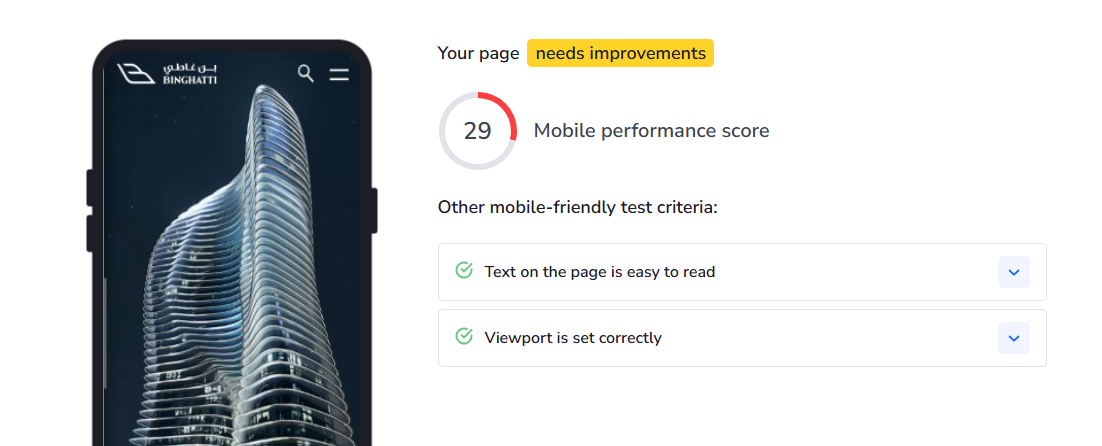
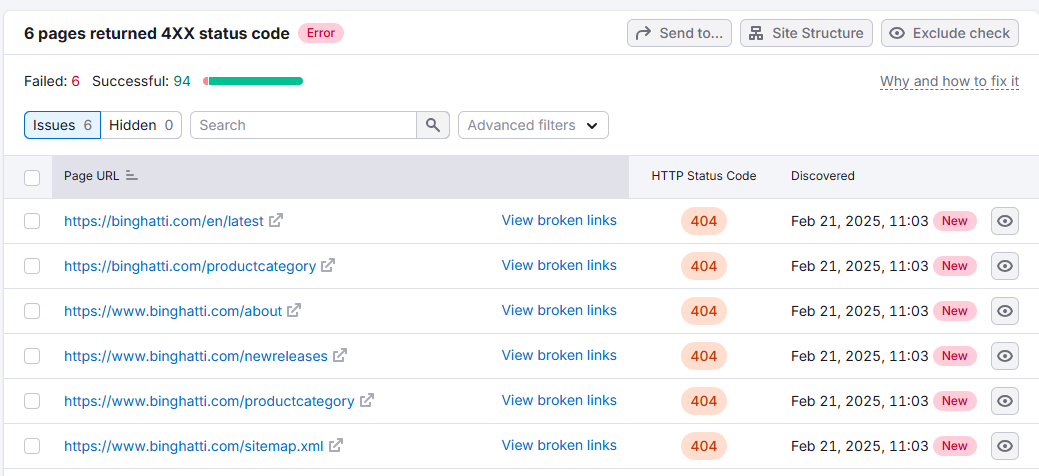
What Happened?
During our initial diagnostics, we found that www.binghatti.com was underperforming across all technical SEO metrics. Despite the brand’s authority, the site had:
Core Web Vitals failures on both desktop and mobile.
Slow loading speeds (8.1 seconds fully loaded time).
Over 27 broken pages (404s) and 243 broken images.
No structured data (schema) for key elements like products or company info.
A missing sitemap, making it harder for Google to properly crawl and index the site.
Weak mobile responsiveness — affecting user retention and Google’s mobile-first indexing.
These issues were costing Binghatti both traffic and conversions, especially on high-value service and property pages.
How I Hepled
1. Speed Up the Website
Remove the preload as it slowing down the website's launch which consequently increasing the bounce rate.
Compress and convert all images to faster-loading formats like WebP using tools such as TinyPNG—this keeps quality high and file sizes low.
Minify JavaScript and CSS files and delay loading non-essential scripts so pages load quicker.
Clean up any unused code with tools like Webpack Bundle Analyzer to streamline the backend.
2. Fix Broken Links and 404 Errors
Repair or update internal links that lead to 404 error pages—21 broken internal links were found during the audit.
Restore or replace 243 broken images, either from backups or with updated versions.
Set up 301 redirects for any moved or deleted content to maintain SEO value and avoid dead ends.
Add a custom 404 error page to provide a helpful experience if users land on a missing page.
3. Add Structured Data (Schema Markup)
Implement structured data using JSON-LD to help search engines better understand key content. Recommended types include:
Organization
Local Business
Breadcrumb
Article
This can boost chances of showing up with rich results in search, like star ratings or breadcrumbs.
4. Make the Site More Mobile-Friendly
Ensure the entire site is responsive, so it adjusts smoothly across all screen sizes.
Improve the mobile experience by enlarging fonts, spacing out buttons, and simplifying navigation.
Test everything on actual mobile devices to make sure everything looks and works as intended.
5. Improve Indexing and Crawlability
Create and submit an XML sitemap through Google Search Console to make it easier for search engines to find and index pages.
Set up a robots.txt file to guide crawlers and prevent them from wasting time on unimportant pages.
Make sure the sitemap auto-updates whenever new pages are added or content is changed.
The Outcome
At the time of publishing this case study, Binghatti has not yet implemented the technical SEO recommendations provided during the audit. As such, the measurable impact on organic performance is pending. However, based on the breadth and severity of the issues identified—and the detailed, actionable solutions proposed—we are confident that full implementation would result in significant improvements in site speed, crawlability, and search visibility. This case study will be updated should progress be made.
